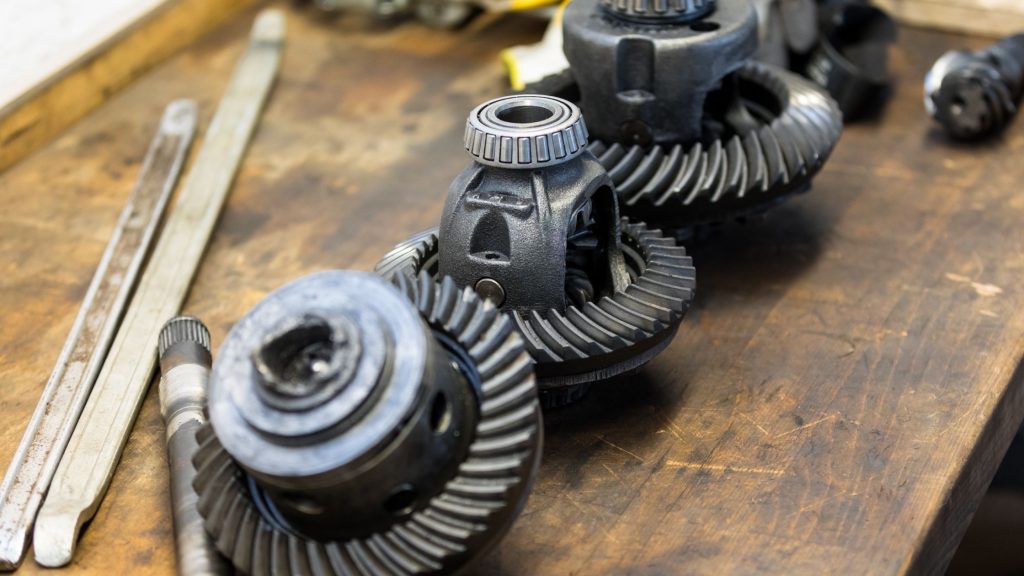RAPTOR is a durable protective coating used often to protect a truck bed liner. It is designed to stand up to the toughest weather conditions. This “do it yourself” product can be applied to a variety of surfaces to protect it from scratches, chips, rust, and corrosion.
If you are in a hurry, typically a whole truck will require 3 to 4 gallons of Raptor Liner.
Can You Paint a Whole Truck with RAPTOR Bed Liner?
Short answer: yes. RAPTOR is growing for use in a variety of automotive, marine, agricultural, and construction applications, to name a few.
Painting your entire truck will not only make your truck look invincible but it also:
- Protect your vehicle from the sun’s harmful UV rays.
- Prevent water damage.
- Looks awesome in a variety of colors.
There are some downsides to covering your entire vehicle, including:
- It may impact the resale value of your truck.
- It’s permanent.
- It may add some weight to your vehicle, which can impact gas mileage.
How Many Layers are Needed for Ideal Coverage?
Two or three coats of RAPTOR bed liner typically provide the best coverage. We find that one coat is just not enough and it typically starts to fade making it necessary to do another layer at a later date. IT’s best to just do two or three layers at the start.
RAPTOR has an average MIL thickness of 7-10 MIL per coat. RAPTOR should be applied in two medium coats.
It’s best to wait 60 minutes between applying each coat. e If you do not give it time to dry between layers, the product will remain soft and will take much longer to fully cure.
How Much Does One Gallon of RAPTOR Bed Liner Cover?
As a general rule of thumb, one gallon should be sufficient for a 6-foot pickup truck bed.
One gallon of RAPTOR will cover approximately 85 square feet of two coats, each about 7-18 MIL thick per coat when spraying.
While rolling, the product will cover about 65 square feet over two coats.
You can apply RAPTOR bed liner using a brush and roller, or sprayer.
How Many Gallons of RAPTOR Bed Liner is Needed for a Whole Truck?

The amount of RAPTOR bed liner needed to cover your entire vehicle depends on your vehicle’s total square footage. To calculate this, simply multiply the length by its width.
Amount of Raptor Liner required for the most common makes and models.
- Chevy Colorado: 4 gallons
- Ford F-150: 3 gallons
- GMC Sierra: 4 gallons
- Honda Ridgeline 3
- Toyota Tacoma: 3 gallons
- Toyota Tundra: 3 gallons
As always when painting cars we need to factor in overspray and other issues, so it is advised to purchase a little more than you think you may need.
How Do You Apply RAPTOR Bed Liner?
Before applying, make sure the weather is going to cooperate in your favor. Avoid extremely cold or hot temperatures. Temperatures of 68 degrees Fahrenheit with a humidity of less than 60 percent are the best conditions to use this product.
It’s important to fully prep the surface you’re going to apply the product to for the best results.
- Wear protective gear such as a respirator and gloves.
- Use the 80-180 grit sandpaper to scuff the surface. This helps the product stick and avoids peeling.
- Totally wipe down or vacuum the surface to remove dirt and dust.
- Use masking tape and masking paper to cover anything in your truck that you do not want the bed liner on, like the windows.
Once the surface has been prepped, you can mix your product:
- Shake thoroughly.
- Up to the first ridge designated A, fill the RAPTOR bottle with 250ml hardener.
- Replace the cap and give it a good shake for 2 minutes.
- If you want a specific color, add around 10 percent of the paint volume to the mixture.
- One bottle of RAPTOR at a time should be mixed.
- Between uses, clean the applicator.
To apply, a brush, roller, or sprayer can be used.
Brush and Roller method
- Pour the RAPTOR mixture into a paint tray.
- Apply slowly using medium pressure with a roller or paintbrush.
- If you’re using a roller or a broad brush, use a smaller brush to cut into corners and crevices.
- Apply the line in the same direction to prevent streaks.
- Wait 60 minutes between coats.
Using a roller or paintbrush results in a much thinner application. Therefore, you may have to apply more than two coats to achieve the look you’re after.
Spraying method
- Attach the spray gun to the RAPTOR bottle that contains the RAPTOR mix.
- Set your compressor’s air pressure to 40-60 PSI.
- Pull back on the spray gun’s trigger. To avoid streaks, move the spray gun across the surface in a sweeping motion.
- The more texture you acquire, the further back you hold your rifle.
- To achieve uniformity, keep the same distance from the surface.
- Make sure the first coat is sufficiently thick.
- Keep an eye out for any thin patches.
- If you wish to add more coats, wait 60 minutes between each one until the desired look is achieved.
Remove any masking tape when the liner is tacky, regardless of how you applied it, to prevent it from sticking to your vehicle completely. Allow 2-3 days for light use and 5-7 days for heavy-duty transportation after it has been applied. Do not cover RAPTOR until it has totally cured.
Pros and Cons of Raptor Lining Whole Truck
- RAPTOR liner is cost-effective since it is simple to apply. It’s also less expensive than alternative ways for safeguarding your truck’s bed.
- When compared to traditional painting, it is easy to clean.
- It increases the load’s resistance to skidding, securing it in position.
- The matte appearance is appealing to the eye.
- You can choose from a wide range of colors.
- Your truck will require fewer repairs and maintenance if you use bed liners.
- The application of a truck bed liner product takes time because it needs to cure.
- To attain exceptional results, you’ll need the skill to be accurate throughout the application.
- The liner must be applied in a sealed place away from the outdoors and vermin.
- Spraying bed liners without using a respirator is dangerous to your health.
Conclusion
Raptor lining your whole truck is a great method of protecting it, especially if you frequent off-roading trails. A typical full-size truck will require 3-4 gallons or Raptor on average. However, we recommend adding a little more to accommodate for mishaps.
- Tips and tricks For Setting Up Camp Like a Pro - September 11, 2023
- The Best Multi-Tools for Overlanding Adventures - August 25, 2023
- Off-Road Navigation Tips for Overlanders - August 13, 2023



